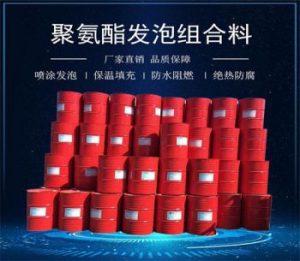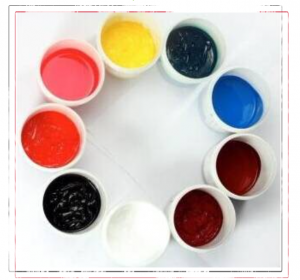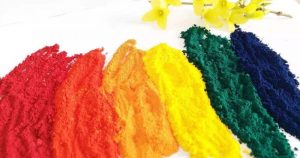Dye Basics: Disperse Dyes
Introduction
Disperse dyestuffs are the most important and major category of dyestuff industry. They do not contain strong water-soluble groups and are disperse in the dyeing process. They are mainly used for printing and dyeing polyester and its blends. They can also be used for dyeing synthetic fibers such as acetate, nylon, polypropylene, chlorine, acrylic, etc. I. Overview of disperse dyes

1、Introduction:
Disperse dyes, a slightly soluble in water, in water through the action of dispersants and highly dispersed dyes. Disperse dyes do not contain water-soluble groups, low molecular weight, although the molecule contains polar groups (such as hydroxyl, amino, hydroxyalkylamino, cyanoalkylamino, etc.), but still belongs to the non-ionic dyes. These dyes require high post-processing requirements and are usually ground by a mill in the presence of dispersant to become highly dispersed, crystallographically stable particles before use. The dyeing solution of disperse dyes is a uniform and stable suspension.
2. History:
Disperse dyes began production in 1922 by the German Baden Aniline Soda Ash Company, mainly for dyeing polyester and acetate fibers. At that time, it was mainly used for dyeing vinegar ester fiber, and after the 1950s, with the emergence of polyester fiber, it gained rapid development and became a major product in the dye industry.

Second, disperse dyes classification
1、Classification according to molecular structure:
According to the molecular structure can be divided into azo type, anthraquinone type and heterocyclic type three categories.
Azo-type chromatography more agent full, there are yellow, orange, red, purple, blue and other kinds of color. Azo disperse dyes can be produced according to the general synthesis method of azo dyes, and the process is simple and the cost is low. (accounting for about 75% of disperse dyes)
Anthraquinone type has red, violet, blue and other colors. (About 20% of disperse dyestuffs) The anthraquinone dyestuffs are known for their bright colors.
Heterocyclic type is a newly developed class of dyestuffs with bright colors. (Heterocyclic type accounts for about 5% of disperse dyes)
The production process of anthraquinone-based and heterocyclic disperse dyes is more complicated and costly.
2. Classified by heat resistance of application:
It can be divided into low temperature type, medium temperature type and high temperature type.
Low-temperature dyes, low sublimation fastness, good leveling performance, suitable for dyeing method, often called E-type dyes;
High-temperature dyestuff, higher sublimation fastness, but poor leveling, suitable for hot melt dyeing, called S-type dyestuff;
Medium-temperature dyes, between the above two fastness to sublimation, also known as SE-type dyes.

III. Terms related to disperse dyes
1、Color fastness:
The resistance of the color of the textile to various physical, chemical and biochemical effects suffered by it during the dyeing and finishing process or during use and consumption.
2、Standard depth:
Recognized depth standard series, define the medium depth as 1/1 standard depth. The same standard depth of color, in the psychological sense is equal, so that color fastness can be compared on the same basis. Currently has developed to 2/1, 1/1, 1/3, 1/6, 1/12 and 1/25 a total of six standard depth.
3、Dyeing depth:
Expressed as a percentage of dye weight and fiber weight, the dye concentration varies according to different color, generally the dyeing depth is 1%, the dyeing depth of navy blue is 2%, and the dyeing depth of black is 4%.
4、Color change:
After certain treatment, the color of the dyed fabric changes in color light, depth or brightness, or the combined result of these changes.
5、Staining:
After a certain treatment, the color of the dyed fabric is transferred to the adjacent lining fabric, the staining of the lining fabric.
6, assess the discoloration with gray sample card:
In the color fastness test, the standard gray sample card used to assess the degree of discoloration of the dyed material, generally known as color change sample card.
7、Grey sample card for assessing staining:
Color fastness test, in order to assess the degree of staining of the dyed material on the lining fabric and the use of standard gray sample card, generally known as staining sample card.
8, color fastness rating:
According to the color fastness test, the degree of color change of the dyed fabric and the degree of staining of the lining fabric, the textile color fastness properties are rated. In addition to light fastness for eight levels (except AATCC standard light resistance), the rest of the five-level system, the higher the number of levels, the better the fastness.
9, lining fabrics:
Color fastness test, in order to judge the dyeing fabric to other fibers staining degree, and dyeing fabric together with the treatment of undyed white fabric.
Fourth, the common color fastness of disperse dyes
1、Light fastness:
The ability of the color of the textile to resist artificial light exposure.
2、Wash fastness:
Textile color resistance to different conditions of the washing effect.
3、Fastness to rubbing:
Textile color resistance to rubbing resistance, can be divided into dry, wet rubbing fastness.
4、Sublimation fastness:
Textile color resistance to heat and the degree of sublimation phenomenon.
5, fastness to perspiration:
Textile color resistance to human sweat, according to the acidity and alkalinity of the test sweat, can be divided into acid, alkali sweat fastness.
6、Fastness to smoke fading:
Textile color resistance to nitrogen oxides in smoke. Disperse dyes, especially anthraquinone structure, encounter nitric oxide, nitrogen dioxide, the dye will produce discoloration.
7、 Resistance to heat and pressure color fastness:
Textile color resistance to ironing and roller processing ability.
8、Dry heat fastness:
Textile color resistance to dry heat treatment ability.
Translated with www.DeepL.com/Translator (free version)

